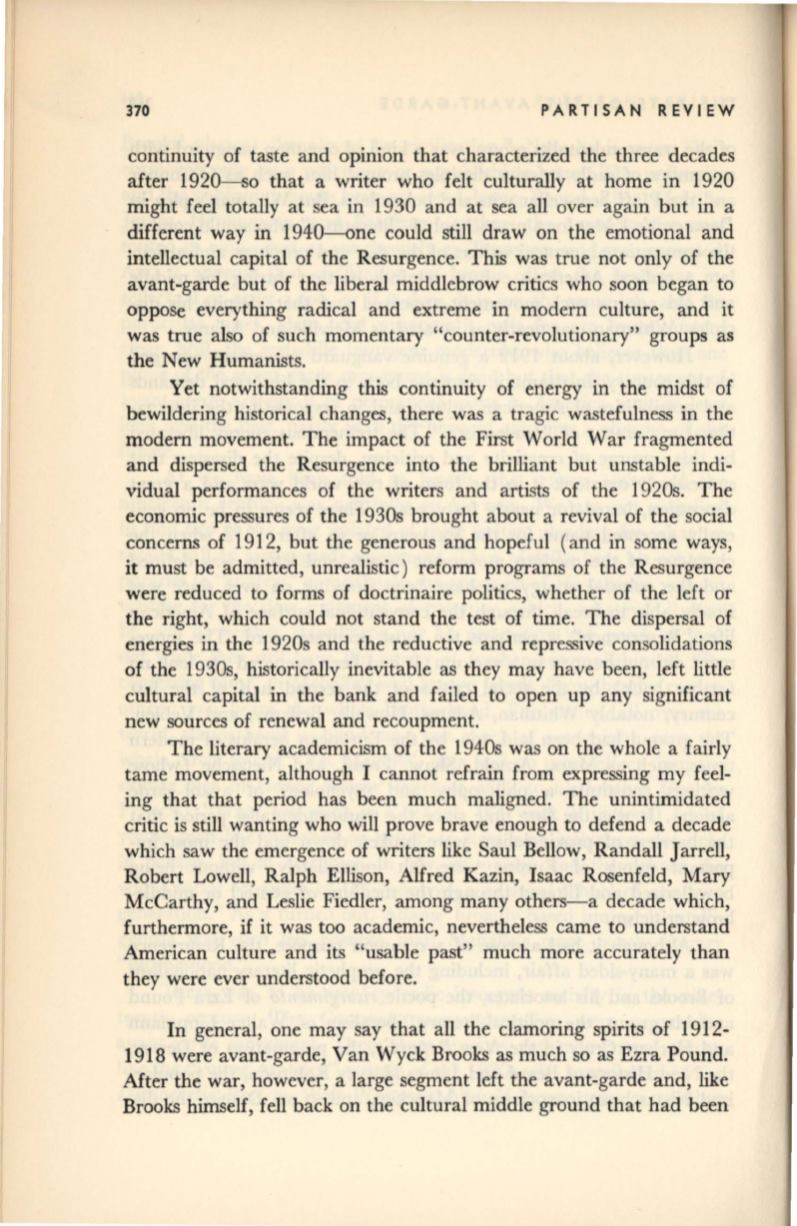
370
PARTISAN REVIEW
continuity of taste and opinion that characterized the three decades
after 1920--s0 that a writer who felt culturally at home in 1920
might feel totally at sea in 1930 and at sea all over again but
in
a
different way in 1940-one could still draw on the emotional and
intellectual capital of the Resurgence. This was true not only of the
avant-garde but of the liberal middlebrow critics who soon began to
oppose everything radical and extreme in modern culture, and it
was true also of such momentary "counter-revolutionary" groups as
the New Humanists.
Yet notwithstanding this continuity of energy in the midst of
bewildering historical changes, there was a tragic wastefulness in the
modern movement. The impact of the First World War fragmented
and dispersed the Resurgence into the brilliant but unstable indi–
vidual performances of the writers and artists of the 1920s. The
economic pressures of the 19308 brought about a revival of the social
concerns of 1912, but the generous and hopeful (and in some ways,
it must be admitted, unrealistic) reform programs of the Resurgence
were reduced to forms of doctrinaire politics, whether of the left or
the right, which could not stand the test of time. The dispersal of
energies in the 1920s and the reductive and repressive consolidations
of the 1930s, historically inevitable as they may have been, left little
cultural capital in the bank and failed to open up any significant
new sources of renewal and recoupment.
The literary academicism of the 1940s was on the whole a fairly
tame movement, although I cannot refrain from expressing my feel–
ing that that period has been much maligned. The unintimidated
critic is still wanting who will prove brave enough to defend a decade
which saw the emergence of writers like Saul Bellow, Randall Jarrell,
Robert Lowell, Ralph Ellison, Alfred Kazin, Isaac Rosenfeld, Mary
McCarthy, and Leslie Fiedler, among many others-a decade which,
furthermore, if it was too academic, nevertheless came to understand
American culture and its "usable past" much more accurately than
they were ever understood before.
In general, one may say that all the clamoring spirits of 1912-
1918 were avant-garde, Van Wyck Brooks as much so as Ezra Pound.
After the war, however, a large segment left the avant-garde and, like
Brooks himself, fell back on the cultural middle ground that had been


